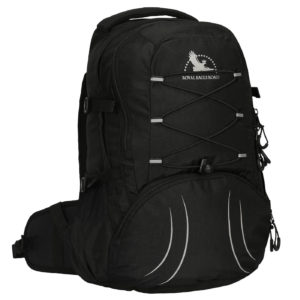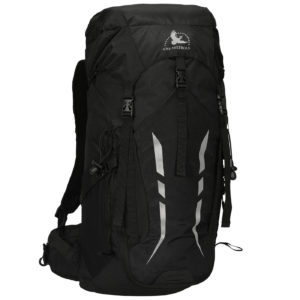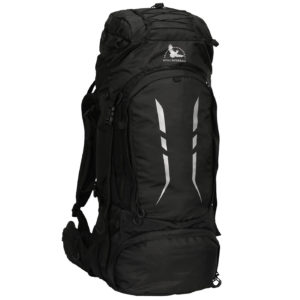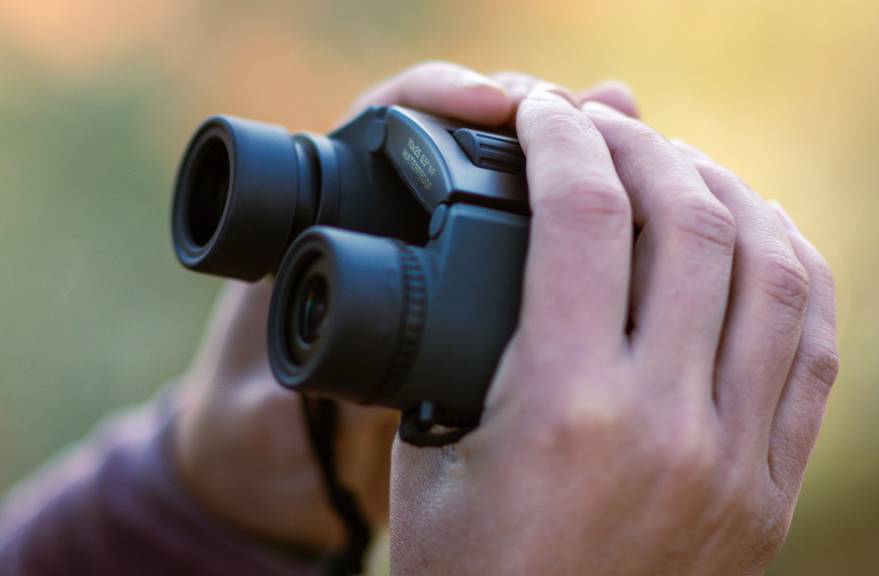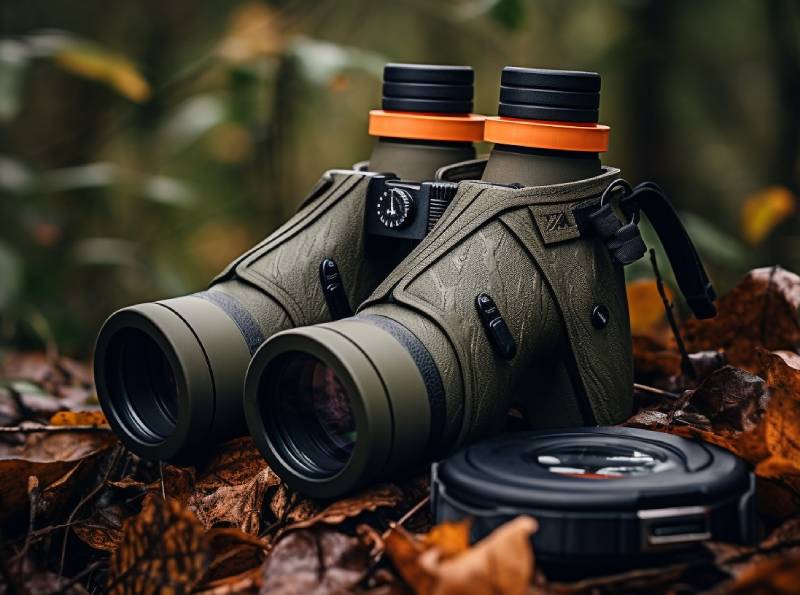The different adjustable straps are designed to stabilize the backpack and correctly distribute the weight on both the shoulders and the hips. These parts can be adjusted according to the body shapeand the trail difficulty. To ensure stability and balance while walking, it is essential to keep in mind where the center of gravity is.
The natural center of gravity of the body is located just above your hips. If you load the weight of the backpack all over the shoulders, the center of gravity moves upwards and we risk leaning backward. To stabilize our posture, we will be tempted to bend forward, constantly tensing the muscles and damaging the backbone.
Adjusting the backpack, evenly distributing the weight on the shoulder and on the hips, allows us to re-establish the center of gravity and thus relax the muscles. A walk without fatigue means physical well-being.
Make sure to distribute the weight over the shoulders and hips. When the backpack adheres to the back, the shoulders have less load to carry.
Our backpacks have shoulder straps, hip belt and backrest completely padded to ensure comfort and air circulation.
It is important to use the side compression straps to squish the load closer to the pack frame for better weight transfer and balance.
What makes a trekking backpack different from other models?
The trekking backpack has 4 fundamental features that make it different from other backpacks. These parts improve balance and stability during movements:
- HIP BELT (or lumbar belt) is wide and padded to transfer the weight on the hips and lighten the shoulders. Hip belt is essential on outdoor backpacks as it also stabilizes the load towards the center of gravity and prevents the backpack from swinging during movements.
- CHEST STRAP(or sternum straps) ensure greater balance while walking as they keep the shoulder straps in position and help distribute the weight.

Chest straps with a whistle. Featured backpack Royal Eagle Road Brigante 28 liter
- COMPRESSION STRAPSare located on the sides of the backpack and are adjustable. They compress the pack, reduce the size and prevent the load inside from moving.
- LOAD LIFTER(also called load adjuster straps or stabilizer straps) prevent the top of the pack from falling away from the body and causing improper weight distribution. They connect the backpack to the shoulder straps keeping the backpack near the back. At the same time, the load lifters evenly distribute the weight across your back. By loosening the shoulder straps of the backpack without load lifters, the backpack would fall backward.
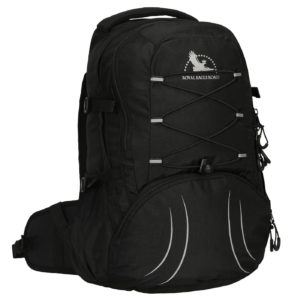
Load lifter. Featured backpack Brigante 28 liter
Guide: how to wear the backpack
Note: Our Himalaya 65 liter is equipped with an adjustable backrest to adapt according to the length of your torso. It is necessary to adjust the backrest because if it is too long, the lumbar belt will slip below the hips, if it is too short, the belt will place above the hips.
Torso length adjustment is the first step before proceeding with the following instructions.
PREPARE THE BACKPACK. To adjust the backpack and adhere it to the back, it needs to have some weight. It doesn’t need to be full, just simulate a load of about ten kilos. Tighten the compression straps to compress the volume of the pack and loosen all other straps: chest strap, hip belt, shoulder straps and load lifters. To wear the backpack, place it on an elevated position (such as a table) or lift it using the legs, not the back.
1. HIP BELT. Lean slightly forward to adjust the hip belt. You need to place it just above the hips, near the bones or above the glutes (the area of the arching bones is called iliac crests). Make sure to position correctly the padded hip belt according to your body shape as part of the weight will be transferred there. A hip belt is essential in outdoor backpacks.
If the hip belt is too high it could be uncomfortable for the stomach.
On the contrary, if it is too low, it will obstacle the movements and not distribute the weight correctly. The important thing is that it leans correctly on the pelvis to lighten the shoulders.
2. SHOULDER STRAPS. Coming back to a vertical position with your back, pull the shoulder straps down so that they adhere to the shoulders and follow their curvature. Pull the shoulder straps without immobilizing your shoulders.
3. LOAD LIFTERS. The load lifters or stabilizing straps are located on the shoulder straps and are used to adjust the position of the backpack. Pull the straps to form an ideal angle of 45 ° from the horizontal plane. Leave space for movement between the backpack and the shoulders. Loose load lifters allow greater back ventilation during lighter trails. Tight load lifters ensure greater stability during tough trails.
4. CHEST STRAPS (STERNUM STRAPS). Adjust the chest straps to keep the shoulder straps in the correct position. This prevents the straps from sliding outwards and thus maintaining stability.
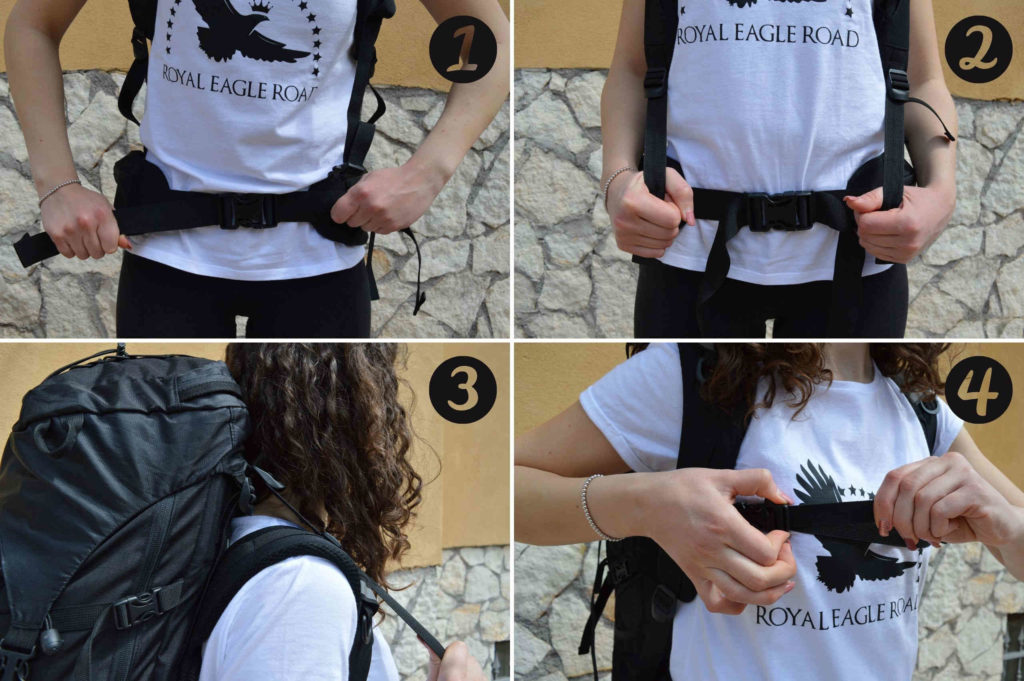
Hikers tip for a correct backpack adjustment
You can adjust your backpack according to the trail, the duration of the excursion, the weather and the physical conditions. You can tighten or loosen the shoulder straps, the chest straps, the load lifter and the hip belt. It will help you to change the distribution of weight between the shoulders and the hips.
Experienced hikers suggest tightening the load lifters when walking on uphill paths so as not to risk losing your balance. On the contrary, loosen them slightly when walking downhill to balance the forward movement of the center of gravity.
As for the hip belt, if it is too loose, the weight of the backpack slides down and the whole load falls on the shoulders. On the contrary, if the hip belt is too tight, it obstacles the movements.
Now that you know how to adjust your hiking backpack, take a look at our Brigante 28 liter, Santiago 45 liter and Himalaya 65 liter.
Royal Eagle Road, an online shop dedicated to outdoor backpacks and accessories.
Unconventional Exploring
Posts you may like:

